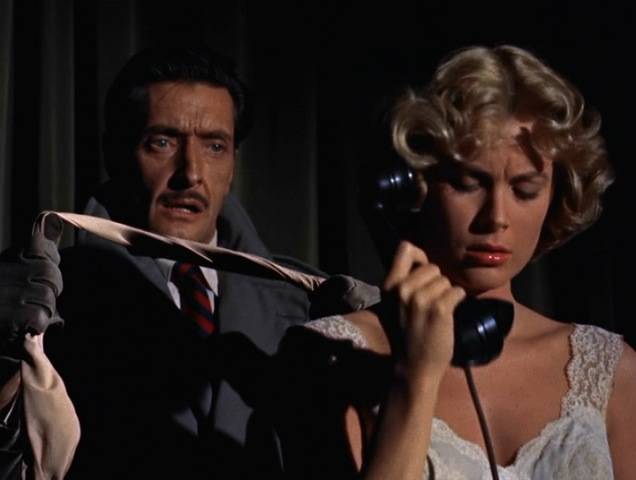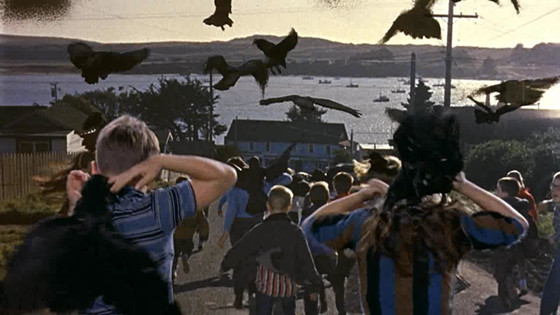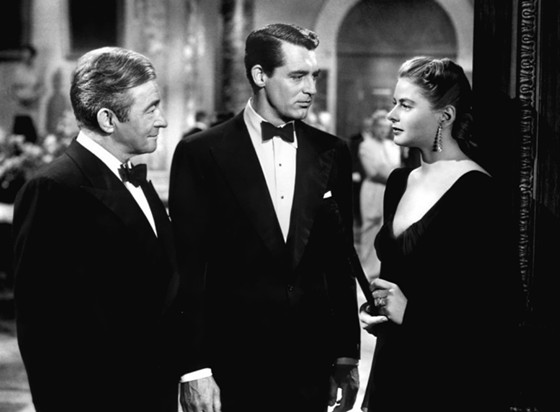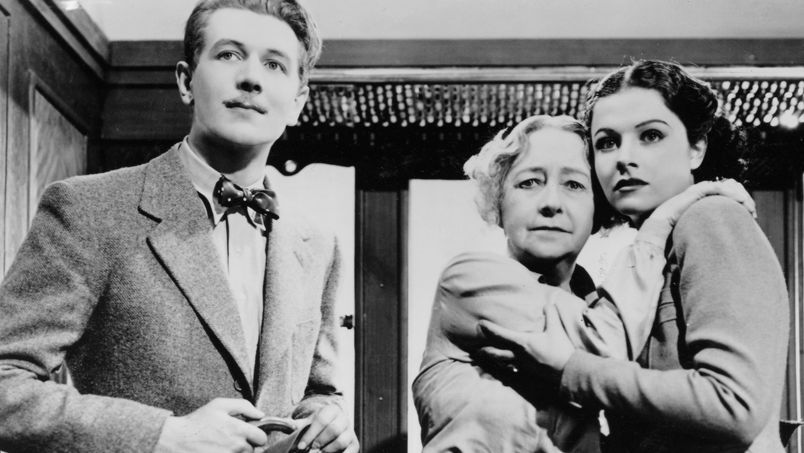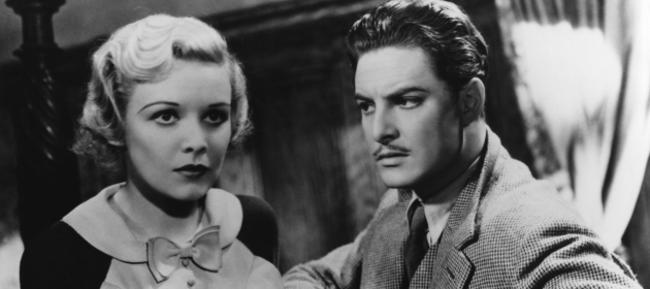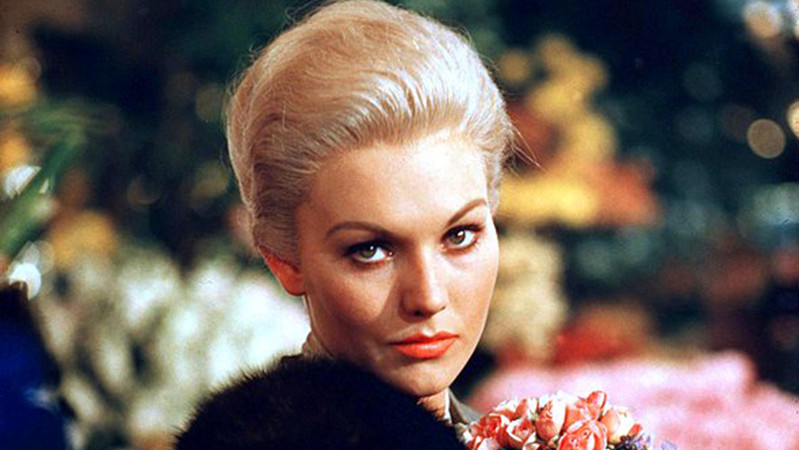
During his lifetime, Alfred Hitchcock was thought of as a master showman who kept his audiences entertained with suspenseful movies and quirky TV shows. Since his death in 1980, Hitchcock’s legacy has been reappraised by both scholars and the general public, and he is now thought of as one of the most significant – if not THE most significant – filmmaker of the 20th century.
Blending humor, suspense and drama with a genuine understanding of the foibles of the human condition, Hitchcock’s films have continued to rank higher and higher on the list of most critics and filmmakers, culminating with Vertigo’s selection in 2012 as the #1 film of all time in the Sight and Sound Critic’s Poll.
These then are the 15 essential films that anyone must see in order to begin to understand Hitchcock’s work and complex filmmaking technique. His career was divided into two distinct periods, the British (pre 1940) and American films, and this list is made up primarily of the American films.
But Hitchcock’s early British films are extremely important to his career, and anyone interested in learning more about Hitchcock should also see these honorable mentions: The Lodger, The Manxman, Blackmail, The Man Who Knew too Much (1934), Sabotage and Young and Innocent, as well as the two British masterpieces on this list. Fortunately, most of Hitchcock’s American films have been restored and released on blu-ray and his 9 silent films have also recently been restored by the BFI.
15. Rebecca (1940)
In March, 1939, Alfred Hitchcock came to America under a seven year contract with producer David O. Selznick. William Rothman remarked that “Hitchcock’s move to Hollywood is like Haydn’s move to London: for the first time, he has a great orchestra at his disposal.”
Although Hitchcock used the technological advancements he found in America to great effect – such great effect that the film would win the Academy Award in 1940 for Best Picture, the only Hitchcock film to do so – he would also later somewhat disavow himself of the film, telling Francois Truffaut “it’s not a Hitchcock picture” and that the film is “lacking in humor”.
Although many view the film as a struggle for control between the domineering producer Selznick and his new ‘employee’, Rebecca is an audacious American debut for Hitchcock, a film steeped in shadows and light, gloomy gothic atmosphere, and a tremendous performance from Dame Judith Anderson as Mrs. Danvers.
The film takes up what will become a major theme for Hitchcock, that of one’s identity becoming subsumed by one who is not there, who is in fact, dead. The dead ruling the living occurs again and again in Hitchcock and is given a fine treatment in this, his first American film. Lawrence Olivier and Joan Fontaine play the leads effectively, and George Sanders is his usual slimy troublemaker as Favell, Rebecca’s “cousin”.
14. Dial ‘M’ for Murder (1954)
Hitchcock was also somewhat dismissive of this film, shot for Warners in 3-D but initially released flat (although it was given a re-release in 1982 in a 3-D version and has now been released on blu-ray in 3-D) telling Truffaut “there isn’t very much we can say about that one, is there?”
A hit play by Frederick Knott, Dial ‘M’ reflects Hitchcock’s love of theater and long standing desire to film a play, which he also attempted with less success in Rope (1948). The film also features the first appearance by Grace Kelly, who became the ultimate ‘Hitchcock blonde’, as well as one of the director’s most suspenseful sequences when Kelly’s Margot is attacked by would be killer Captain Lesgate (Anthony Dawson).
Dial ‘M’ also points to one of Hitchcock’s primary theories, which is that your film is only as good as the villain. In this case, Ray Milland is at his oily best as Tony Wendice, plotting the murder of his beautiful but unfaithful wife on one hand, while eventually trying to frame her for Lesgate’s murder. Robert Cummings is along as the boyfriend and John Williams is a rare positive police figure in a Hitchcock film. Sometimes underrated, you should see it in 3-D if you’re going to see it at all.
13. The Birds (1963)
We can’t NOT include it on this list, but The Birds is one of Hitchcock’s most problematic films of his essentials. Made as a follow up to the tremendous success of Psycho, The Birds was Hitchcock’s most hyped film and audiences were somewhat disappointed by the cardboard characters and the oddly ambiguous ending of the film that never reveals a ‘reason’ for the bird attacks.
Hitchcock and Even Hunter adapted a Daphne DuMaurier short story and moved it from the Cornwall coast to northern California’s Bodega Bay, adding his new find Tippi Hedren into the mix as Melanie Daniels, in pursuit of Mitch Brenner (Rod Taylor) and under the attack of swarms of birds. The film has some truly terrible moments, such as the awkward conversation between Mitch and Melanie during Cathy’s birthday party on an awful fake looking set (many of Hitchcock’s 1960’s Universal films suffered from the studio’s poor production and set design) but the bird attacks are fantastic for the most part, and a great technical achievement for their time.
Tony Lee Moral has written a good book on the making of the film that describes the technical problems Hitchcock faced and, for the most part, overcame. A good supporting cast featuring Suzanne Pleshette and Jessica Tandy help the film along, but Hedren is better in her next film for Hitchcock, Marnie.
12. Notorious (1946)
Hitchcock worked closely with his screenwriters, although after he came to America he never took a credit. He teamed with esteemed writer Ben Hecht in the mid 1940’s on Spellbound, his second film for Selznick, and Notorious, which was supposed to be his third film for the producer. But Selznick needed cash in order to complete his western epic Duel in the Sun, and so sold the film as a package to RKO, leaving Hitchcock to produce Notorious himself, and make one more film for Selznick, 1947’s unfortunate The Paradine Case.
Notorious is considered by many to be Hitchcock’s greatest film of the 1940’s, featuring the brilliant romantic pairing of Cary Grant as American agent T.R. Devlin and Ingrid Bergman as Miami playgirl Alicia Huberman, who flies down to Rio with Devlin in order to infiltrate a ring of Nazis led by Alexander Sebastian (Claude Raines). When Sebastian asked Alicia to marry him, Devlin most confront the conflict between his growing feelings for Alicia and his duty.
Alicia is put in a similarly difficult spot, marrying a man she doesn’t love in order to help the cause and eventually being slowly poisoned by Alex and his mother. The film was beautifully photographed and became a major hit for Hitchcock, his last before suffering a commercial downturn later in the decade.
11. The Lady Vanishes (1938)
The culmination of the ‘sextet’ of 1930’s thrillers that catapulted Hitchcock to international fame, The Lady Vanishes shows the director at the peak of his powers during his British period. Margaret Lockwood’s Iris is riding home on a train to marry her blasé fiancee when she befriends Miss Froy (Dame May Whitty), an elderly English matron who proceeds to disappear as Iris turns the train inside out looking for her.
This theme, of someone leading an ordered, boring, routine life having their world turned upside down by sudden chaos, is repeated again and again in Hitchcock. Michael Redgrave is charming as Gilbert, who at first annoys Iris but eventually falls in love with Iris as he helps her search for Miss Froy despite the interference of the strange and ominous passengers on the train.
The Lady Vanishes has hardly a dull moment, from its opening in a snowbound Balkan hotel to the almost madcap search for Miss Froy to the final shootout with the fascist forces of evil who want to stop her. The Lady Vanishes shows Hitchcock as a filmmaker capable of making the type of screwball comedies popularized by Preston Sturges and Frank Capra, and the film was virtually remade as Silver Streak in 1976 by director Arthur Hiller with Gene Wilder and Jill Clayburgh.
10. The Thirty Nine Steps (1935)
Hitchcock’s greatest early success was with this adaptation of John Buchan’s 1915 novel, with Robert Donat as Hannay, whose trip to a London music hall propels him into a world of intrigue and danger. Accused of killing a female government agent in his own apartment, Hannay goes on the run to Scotland to uncover the ring of spies that the agent was looking for, and along the way he picks up Pamela (Madeleine Carroll) who at first turns him in but eventually comes to believe him.
As in many Hitchcock films, the story’s ‘MacGuffin’ (in this case uncovering the spy ring and keeping vital secrets from leaving the country) drives the action of the film forward, but the true importance of the story comes when Hannay and Pamela drop their defenses and stop bickering with each other, eventually joining forces and ending up falling in love. The final shot of their clasped hands is a classic.
A film that is very much about public lives versus private lives and the danger that comes when false appearances mask a dark and scary reality, The Thirty Nine Steps established Hitchcock as a force to be reckoned with on the international stage, eventually resulting in him signing a contract with Selznick to come to Hollywood.
9. The Man Who Knew Too Much (1956)
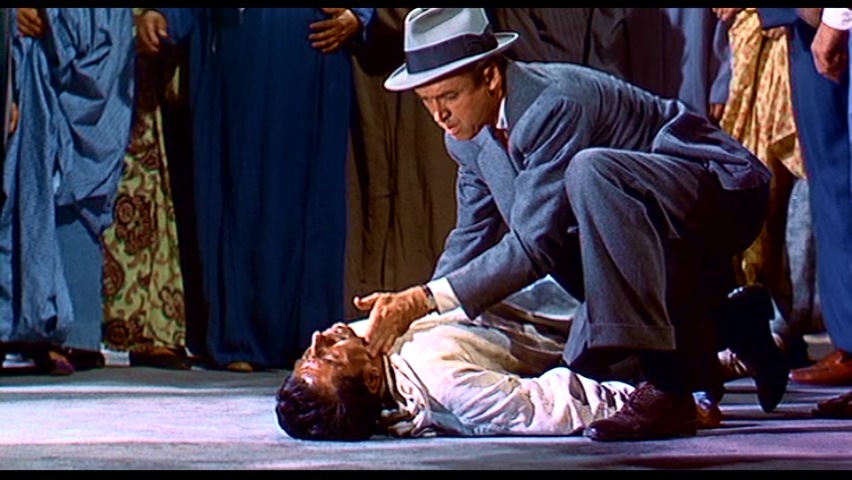
Hitchcock noted that his 1934 British version was the work of a “talented amateur”, while his 1956 Hollywood remake was the work of a “professional”. Featuring James Stewart and Doris Day as the McKennas, an American couple on vacation with their son who is summarily kidnapped after Dr. McKenna receives information from a dying British agent about a planned assassination of a foreign dignitary in London.
The couple have to set aside their differences and work together to find their son and face down the kidnappers during the climactic scene at the Royal Albert Hall, almost unquestionably the greatest single sequence of any of Hitchcock’s films.
The Man Who Knew Too Much reveals why many view Hitchcock not only as a Master of Suspense, but also as a master of depicting characters beset by anxiety and stress during a time of great international tension and danger, anticipating the Cold War years to come.
Although it may seem to be a little dated, especially during the sequence when Doris Day sings her hit song “Que Sera Sera”, The Man Who Knew Too Much is a major work for Hitchcock, putting forth all of the themes and motifs that preoccupied him for years.

